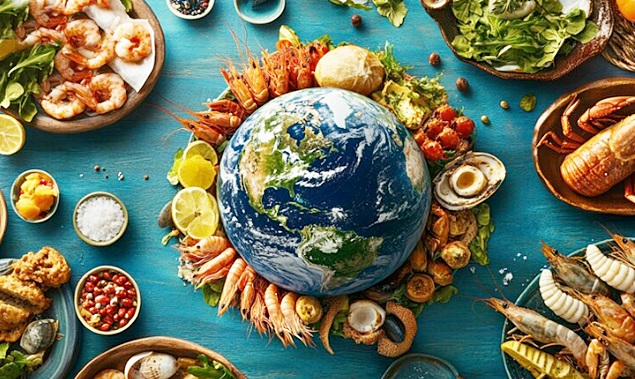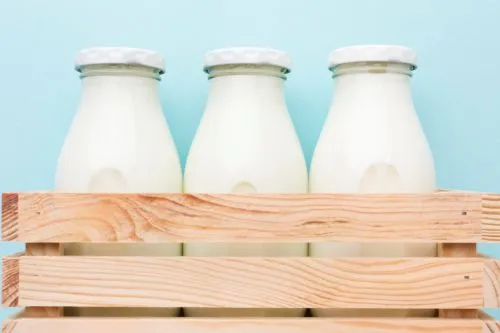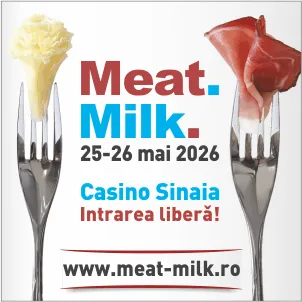
Cold Chains: A Key Strategy in Reducing Global Food Loss
Global food losses have been estimated to range from 25% to 50% of production volumes, caloric content, and/or market value—depending on the commodity (Lipinski et al., 2023).
The use of cold handling and storage systems—more precisely, the cold chain—as an investment to prevent losses of perishable food is widely implemented in developed countries and can be highly cost-effective. This approach is often more sustainable than continuously increasing food production to meet rising demand.
This is the conclusion of the FAO report Use of Cold Chains for Reducing Food Losses in Developing Countries by expert Lisa Kitinoja.
Key Segments of the Cold Chain
Cold technologies in agricultural supply chains for meat, dairy, fish, and horticultural products began developing in the early 1950s alongside the growth of the mechanical refrigeration industry.
However, cold chains remain limited in most developing countries, where numerous technical, logistical, and investment challenges persist—alongside potential economic opportunities. The core segments of an integrated cold chain include:
- Packing and cooling of fresh produce
- Food processing (e.g., freezing certain processed items)
- Cold storage (short- or long-term storage of refrigerated or frozen foods)
- Distribution (refrigerated transport and temperature-controlled storage)
- Marketing (cold storage and displays at wholesale and retail markets or food service operations)
Decision-makers across the agriculture, energy, education, and food sectors must work together to promote cold chain technologies. Improvements are needed in logistics, maintenance, service infrastructure, education, and management skills to build sustainable markets for designing, implementing, and financing cold chains to reduce losses of perishable foods.
The Role of Temperature
Fresh food continues to metabolize throughout its shelf life—from harvest or slaughter to packaging, distribution, marketing, and sale. Nutrients like carbohydrates and proteins degrade into simpler compounds through respiration, enzymatic breakdown, and microbial activity—all highly dependent on temperature.
As with most biological processes, higher temperatures accelerate these natural degradation mechanisms, causing loss of color, flavor, nutrients, and texture. In fact, a general rule of thumb (the Q10 coefficient) states that the rate of degradation doubles for every 10°C increase in temperature. For example, keeping a food product 10°C cooler than ambient temperature can double its shelf life.
There are exceptions: some fresh perishable products may suffer chilling injury below 10°C, while others may freeze below -1°C. In addition to physiological damage, food may also be affected by microbes—such as bacteria and fungi—that cause mold, rot, and water loss, contributing to spoilage.
Both microbial growth and water loss occur faster as temperature increases. Few interventions can preserve the visual quality, nutritional value, and market worth of fresh food as effectively as simply keeping it cool. Cooling provides key benefits:
- Reduces respiration: lowers perishability
- Reduces transpiration: minimizes water loss and shrinkage
- Lowers ethylene production: delays ripening
- Increases resistance to ethylene
- Slows microbial activity
- Reduces browning and loss of texture, flavor, and nutrients
- Delays ripening and natural senescence
What Is a Cold Chain?
A cold chain for perishable foods refers to the uninterrupted handling of products in low-temperature environments throughout the postharvest value chain—including harvesting, collection, packaging, processing, storage, transport, and retail—until the product reaches the final consumer.
An integrated cold chain moves perishable food from farm, field, or water source through each postharvest step to the end consumer. Its main segments include:
- Packing and initial cooling of fresh produce
- Processing (e.g., freezing processed food)
- Cold storage (short- or long-term refrigerated/frozen storage)
- Distribution (refrigerated transport and temporary storage)
- Marketing (cold rooms, freezers, and displays at wholesale/retail outlets or food service sites)
Cold chains may range from simple and low-tech to highly sophisticated systems.
Cold Chain Logistics
Cold chain logistics involves planning and managing transitions between all five segments to keep foods at optimal temperatures—ensuring food quality, safety, and minimizing economic losses.
Speed is often a critical success factor in handling and marketing perishable foods using cold supply chains (Kohli, 2018).
Cold chains are a well-established method for reducing food loss and waste and have long been promoted by major organizations such as the International Institute of Refrigeration, the Global Food Logistics Organization, and the Global Cold Chain Alliance.
Yet, in many developing countries, the necessary infrastructure, facilities, equipment, and management skills are lacking.
Postharvest issues are rarely addressed in major agricultural or SME policy reports from international donors and financial institutions. Recent examples include FAO's State of Food and Agriculture and Food Security, Agriculture, and Climate Change Towards 2050. Similarly, only one reference to “cold chains” appears in the 270-page Agro-Industries for Development manual published by FAO/UNIDO (da Silva et al., 2019).
To address this, FAO launched the SAVE FOOD initiative, bringing together numerous partner organizations working to reduce food loss and waste.
Infrastructure Investment
One of the main priorities cited in the Global Harvest Initiative report Global Agricultural Productivity: Tracking Progress and Priorities was “Improving food system infrastructure and processing to benefit agricultural product distribution and reduce waste” (GHI, 2020). The report concludes that significant public and private investments are needed in capital and infrastructure across the food system.
Postharvest sector reports consistently demonstrate the cost-effectiveness and importance of cold chain development. However, building a cold chain in a developing country requires the integration of many stakeholders.
Continuous Cold Chain Management
Unfortunately, many grant programs have focused on establishing isolated cold storage or food processing facilities—rather than long-term management and maintenance of integrated cold chains. Selecting appropriate cooling technologies must be done carefully.
There is a wide variety of technologies available for cooling during handling, processing, storage, and transport. Some are simple and affordable; others are advanced and complex.
For pre-cooling, options range from on-farm ice use to systems like forced-air cooling, hydro-cooling, or vacuum cooling. For storage, food handlers can choose from small cold rooms to large-scale commercial refrigerated warehouses. These can use traditional mechanical systems, low-cost air conditioning with CoolBot controllers, or evaporative cooling chambers.
Food processors may use chillers, freezers, IQF systems, freeze-drying, and more. For transport, cold conditions can be maintained with ice, refrigerated trailers, evaporative cooling systems, or passive cooling technologies such as insulated packages or pallet covers.
The best choice depends on the product and the complexity of the value chain.
A Word on Costs
Kitinoja and Thompson (2018), along with Winrock International (2019), analyzed cooling practices for pre-cooling and cold storage, offering basic guidance on available technologies and outlining capital costs and energy usage for small-, medium-, and large-scale operations.
Generally, the highest costs are associated with mechanical refrigeration systems powered by electricity or diesel—especially in warmer regions. However, the benefits often outweigh the costs, as these regions also face the highest levels of food loss due to inadequate temperature management.
Evaporative cooling works best in dry regions or during dry seasons, when relative humidity is low. Total construction and operating costs for cold systems vary widely based on local materials, labor, and electricity prices.
Postharvest food losses can be significantly reduced with cold storage, but the return on investment for any specific operation depends heavily on the market value of the stored products and on whether the facility is operated at full capacity.
(Photo: Freepik)




